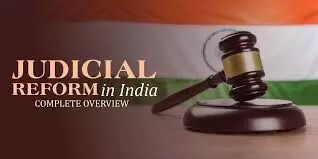Judicial Boundaries and the Accused: Navigating Fair Trial Rights Amid Central Agency Prosecutions

The right to a fair trial, enshrined in Article 21 of the Constitution, is an essential safeguard against arbitrary state action. However, in cases involving central investigative agencies, this right often finds itself entangled in procedural complexities that may subtly disadvantage the accused. Recent judicial interpretations regarding disclosure of unrelied documents and the procedural hurdles involved in securing them illustrate how legal frameworks—though ostensibly neutral—can become a battleground for fundamental rights.
At the heart of this discussion lies the court's ruling that investigative agencies must inform the accused of documents and materials in their custody that are not formally relied upon in prosecution. This acknowledgment, while appearing to favor transparency, does not automatically grant the accused access to those materials. Instead, they must invoke Section 91 CrPC (now Section 94 BNSS) through formal application, arguing the relevance of the requested documents to their defense. This additional procedural requirement places the burden on the accused, compelling them to justify access to potentially exculpatory evidence—an obligation not mirrored on the prosecution, which freely leverages state machinery to structure its case.
This judicial position, though rooted in procedural fairness, implicitly tilts the balance of power towards investigative agencies. By requiring a formal application, the court ensures controlled access rather than automatic disclosure, making it far easier for the prosecution to withhold potentially significant documents unless the accused proactively seeks them out. Furthermore, since Section 233(3) CrPC allows the judiciary to reject such requests if deemed unnecessary or obstructive, courts retain the discretion to dismiss defense petitions—a prerogative that further curtails the accused’s ability to secure evidence critical for their defense.
The core issue lies in how courts interpret "fairness" in the trial process. A fair trial is not merely about ensuring procedural correctness but must encompass effective access to evidence. The right to defend oneself includes the ability to scrutinize investigative findings holistically, ensuring that no material favoring the accused remains buried under bureaucratic discretion. However, when central agencies conduct investigations with vast resources and government backing, the structural disadvantage of the accused becomes more pronounced. The court's decision, while acknowledging their right to petition for documents, does not automatically remedy the imbalance. It merely establishes a framework within which the accused must maneuver—often with limited knowledge of what evidence exists or how it might impact their defense.
This problem intensifies when investigative agencies pursue cases with political or institutional motivations. Accused individuals, particularly those entangled in cases initiated by central bodies, face higher scrutiny and extended pre-trial detentions, further limiting their ability to mount a robust defense. The necessity for formal invocation of Section 91 CrPC (Section 94 BNSS) adds another layer of procedural complexity that investigative agencies can exploit, delaying disclosure and complicating the accused’s ability to contest allegations effectively.
Additionally, the judiciary's position on its own limitations must be examined critically. While courts emphasize adherence to procedural integrity, they often refrain from questioning investigative agencies on potential biases in evidence selection. This hesitance effectively legitimizes prosecutorial discretion while imposing restrictions on the accused, requiring them to navigate judicial processes merely to secure evidence that should, in principle, be accessible by default. This judicial approach inadvertently transforms the fair trial doctrine into a procedural formality rather than an active safeguard of rights.
The case under discussion arises from a petition that sought clarity on the accused's right to access unrelied documents. The court, rather than granting outright access, ruled that the accused could apply under Section 91 CrPC (Section 94 BNSS), thereby placing discretion in judicial hands. While this prevents unchecked document hoarding by investigative bodies, it does not ensure transparency or accessibility. Instead, it establishes a controlled mechanism that, while technically functional, favors prosecution interests by making defense access conditional.
This ruling reflects a broader trend where courts recognize fair trial principles but hesitate to impose absolute transparency requirements on investigative bodies. This cautious approach enables prosecutorial discretion to persist, allowing central agencies to structure narratives favoring conviction rather than truth-seeking. The accused, meanwhile, remains reliant on judicial discretion to access materials necessary for their defense—an arrangement that, despite being legally sound, remains structurally inequitable.
A truly fair trial should facilitate equal access to investigative findings, ensuring that neither the prosecution nor the defense holds an undue advantage in evidence gathering. Courts must reconsider whether procedural safeguards like Section 91 CrPC (Section 94 BNSS) genuinely serve the interests of justice or if they merely provide investigative agencies with greater latitude to shape case narratives while limiting defense capabilities.
In essence, while the ruling acknowledges defense rights, it does not erase the systemic barriers faced by accused individuals when confronting central investigative bodies. Judicial interpretation must move beyond procedural correctness and toward substantive fairness, ensuring that all parties in a trial stand on equal footing. Otherwise, the fundamental principle of fair trial risks becoming an illusion of justice rather than a reality.
